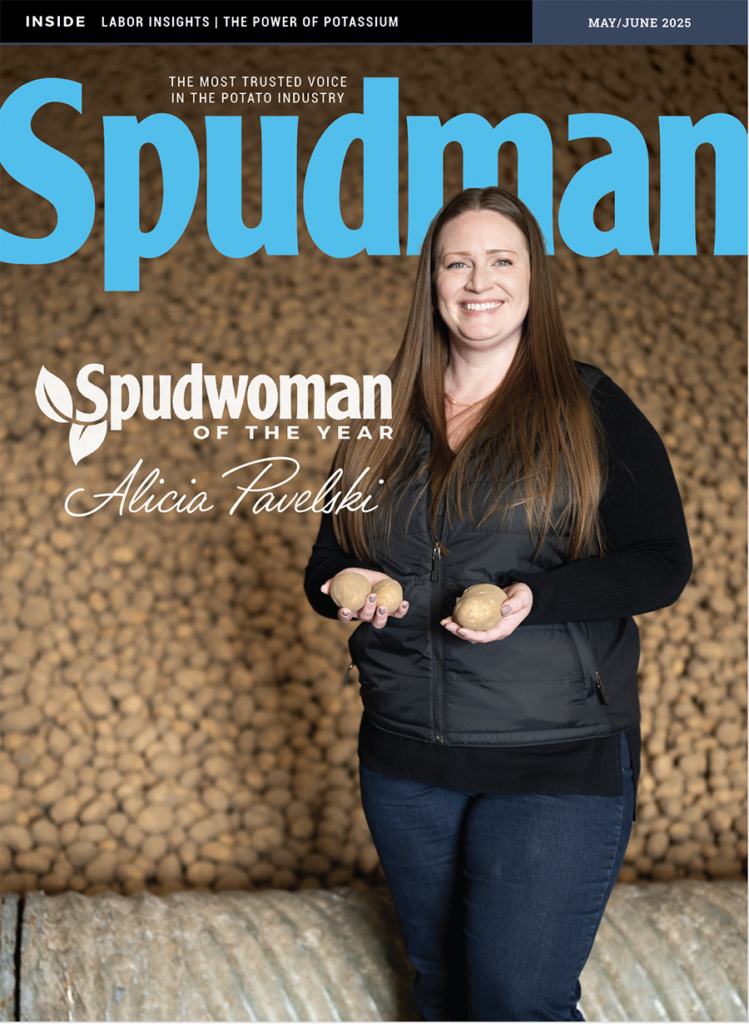May 25, 2022Forthcoming Tri-State spud variety to honor potato breeder’s daughters
A cooperative potato breeding program that includes the University of Idaho (U of I) is poised to release a red-skinned variety with white flesh, notable for its consistently round tuber shape and its desirable size profile.
The new Northwest (Tri-State) Potato Variety Development Program variety will be named Becca Rose, in honor of USDA Agricultural Research Service research geneticist and potato breeder Rich Novy’s two daughters, Rebecca (Becca) and Jenna Rose. The program, started in 1985, is a research collaboration involving U of I, Washington State University, Oregon State University and USDA-ARS scientists in Aberdeen and Prosser, Washington.
“Once a breeding clone is named and released as a variety then the ownership of that variety is shared within the Tri-State program, currently with a new agreement between the Idaho, Washington and Oregon potato commissions, the USDA-ARS and the three universities,” Novy said, adding royalties from the Tri-State varieties are invested back into the Tri-State research programs.
Rhett Spear, a U of I potato variety development specialist, added, “It’s a great collaboration between ARS and the universities. They don’t have the personnel to do all the field testing, and we don’t have the personnel to do all the crosses and early generation field evaluations.”
Becca Rose should be officially released by late summer 2022 and previously had been known by its breeding clone designation: NDA050237B-1R.
In 2005, North Dakota State University potato breeder Susie Thompson made the cross for Becca Rose between a pair of unnamed breeding clones and sent an unselected tuber that grew beneath that initial germinated seedling to Novy at Aberdeen. Novy planted the seedling tuber in his 2007 single-hill field evaluations, which include more than 100,000 seeding tubers resulting from hybridizations conducted at Aberdeen and another 10,000 to 15,000 seedling tubers planted from other U.S. breeding programs each season. The breeding clone was selected in the field at Aberdeen in 2007 and subsequently retained through many years of field trials across different growing environments. Becca Rose is unique in also having a Chilean variety as a grandparent in its ancestry.
“The key here is reciprocity. Susie has a variety she will release this year that came from Aberdeen hybridizations that she selected in North Dakota,” Novy said.
This reciprocal exchange of germplasm among U.S. potato breeding programs has occurred for decades and maximizes the potential for a release of a new variety for the U.S. industry.
Researchers from U of I, USDA-ARS and others involved in the program evaluate the tubers grown in the single-hill evaluations and retain only the top 1% to 3% to plant the next year in the 12-hill trial. With each subsequent field generation, more breeding clones are eliminated, and larger plots of each breeding clone are planted to allow for broader evaluations across multiple sites to assess performance under different growing environments.
Breeding clone seed is expanded at U of I’s Tetonia Research and Extension Center through a collaborative effort between Tetonia staff and ARS. Aberdeen breeding clones are then shared with the other Tri-State collaborators for evaluations under their conditions after six or seven years in the program.
That’s also about the timeframe in which Spear begins management evaluations. They provide guidance on fertilizer requirements, how each breeding clone grows, row spacing, metribuzin herbicide sensitivity and other key factors.
“We try to get a good idea of management practices for different varieties, so if they are released we can communicate good information to the industry,” Spear said, adding yield evaluations begin with the 12-hill trials and continue through the Tri-State and Western Regional trials.
It takes between nine and 12 years for a variety to be released. The program typically releases a variety or two each year, and the Tri-State partners are all involved in the decision.
“The main driver of if a variety gets released is if there is a champion for it,” Spear said. “In this case growers in the Midwest are interested in the yield, color and size profile.”
In collaboration with Michigan State University, Becca Rose has been thoroughly tested in Michigan, where common scab pressure can be high, and appears to have good resistance to the bacterial disease. It also has been noted as high yielding with excellent skin color and tuber uniformity and a low incidence of internal defects in Michigan. In addition to the strong industry interest in Michigan, Brian Charlton, of Oregon State University, has recognized its potential for western growers based on his evaluations in Klamath Falls, Oregon.
Becca Rose produces average yields, but a high percentage of tubers are less than 6 ounces in western environments, which is a size profile that can be sold at a premium. In fields in Michigan, however, tuber size is larger, with a higher percentage of A-sized tubers, which the Michigan industry likes. Becca Rose has proven to retain its shape after baking and boiling. The spud’s brilliant color also doesn’t fade as much as other red-skinned varieties in storage.
The Aberdeen breeding program mostly specializes in developing Russet potatoes, and Novy has been eagerly awaiting the release of a red variety from his program to recognize his daughters. Rose, his youngest daughter’s middle name, is commonly used in naming red-skinned varieties.
“They’ve been excited about it,” said Novy, who has brought countless advanced
potato breeding clones home to his family over the years to sample at dinner. “For them to have a potato variety named after them after many meals with breeding clones over the years, I know they’ve really appreciated that.”
Rich Novy, USDA-ARS research geneticist and potato breeder, and new variety Becca Rose, named after his two daughters. Photo: University of Idaho














